Twenty years ago, it seemed like hydrogen fuel cell vehicles would have a bright future.
Science
Getting up close and personal with space junk
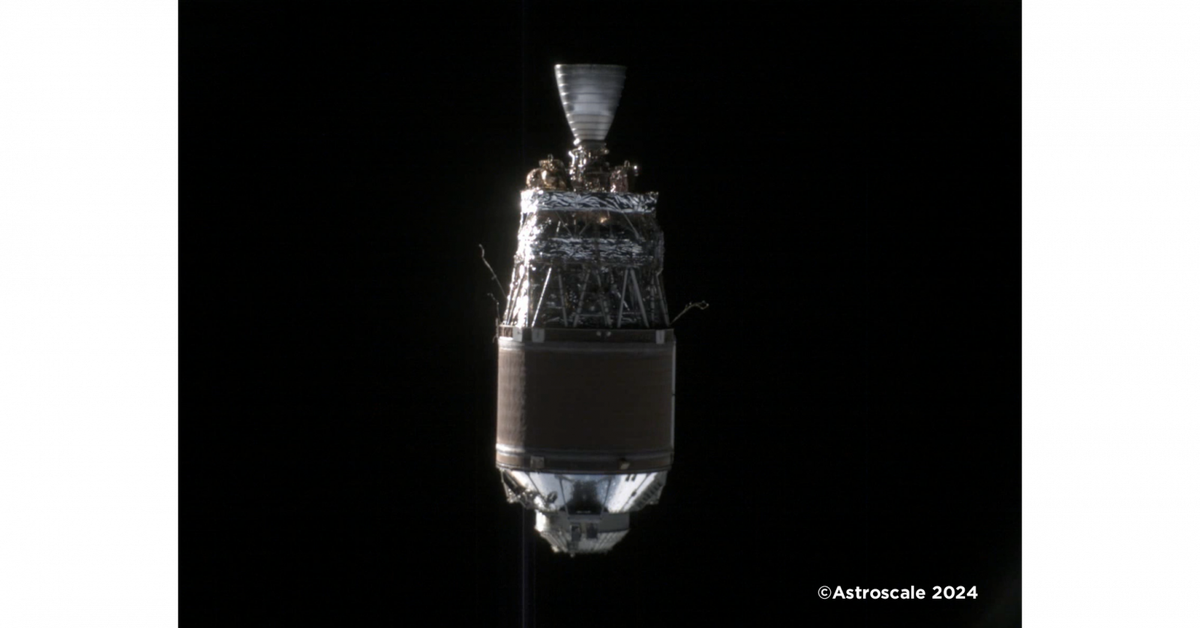
We’re getting a close look at some of the space junk that’s floating in space thanks to Tokyo-based company Astroscale Japan. New images taken from a distance of just 50 meters, show the discarded upper stage of a Japanese H-2A rocket that’s currently trapped in Earth’s orbit. They were taken by Astroscale’s Active Debris Removal (ADRAS-J) satellite following the spacecraft’s first fly-around observation of the debris.
ADRAS-J was launched on February 18th with the goal of collecting observational data that can be used to eventually remove large-scale space junk from orbit. The satellite has been monitoring the rocket’s upper stage for several months. The images were released after a test of the craft’s autonomous collision avoidance system designed to allow ADRAS-J to safely approach debris at close distances.
Photographs taken during the fly-around maneuver give us the closest look at the discarded H-2A upper stage rocket body since it was used to launch the GOSAT Earth-observation satellite in 2009. The object, seen floating above the Earth, weighs approximately 3 tons, and measures at around 11 meters (around 36 feet) long and 4 meters (around 13 feet) in diameter – a smidge smaller than an average city bus.
Astroscale says ADRAS-J successfully maintained a distance of approximately 50 meters (about 164 feet) during the fly-around, before an “unexpected attitude anomaly” triggered an autonomous abort after completing around one-third of the maneuver. ADRAS-J then moved away from the debris as intended and “remains in good health” according to Astroscale. The anomaly has since been identified, and Astroscale engineers are now preparing to approach the discarded upper stage again.
Phase two of Astroscale’s ADRAS-J mission, which aims to actually capture and deorbit some large space junk, is scheduled to begin no earlier than 2026.
Science
Running on water: hydrogen fuel cells are coming to boats and trucks

The cars were cool — luxury sedans with sleek interiors and futuristic-looking touchscreens. They were environmentally friendly, with water vapor as their only byproduct. Regulators were on board, promising big investments for the fueling infrastructure. A bet on the most abundant element in the universe in the fight against air pollution, and eventually climate change, seemed like a sure thing.
But despite tens of thousands of vehicles sold and billions of dollars spent on fueling, that bet has yet to pay off. California remains the only state in the country with any sort of hydrogen fueling infrastructure, with fewer than 50 stations currently in operation. Vehicle sales have essentially collapsed: only 322 fuel cell vehicles were sold in the first half of 2024, 82 percent lower than a year ago.
The fueling infrastructure also seems on the brink of collapse. Stations are shutting down, and the ones that are still in operation are routinely offline due to tech problems and fuel shortages. The price of hydrogen continues to climb, as production problems and supply shortages roil the market.
Tesla CEO Elon Musk called hydrogen fuel cell vehicles “mind-bogglingly stupid”
Critics have panned hydrogen as an inefficient and illogical way to decarbonize transportation. After all, battery-electric vehicles already exist. Tesla CEO Elon Musk called hydrogen fuel cell vehicles “mind-bogglingly stupid.”
But hydrogen still has the potential to be a game changer in the fight against climate change, if we can find a better solution. Despite their early failures, major companies are still pouring billions of dollars into the technology. Governments are drawing up infrastructure plans and passing tax credits in the hopes that they can provide a helping hand.
If hydrogen fuel cells are to hang on, it’s time to think bigger.
Out to sea
The boat bobbing in the waters near Wall Street doesn’t look like the other vessels that typically populate New York’s congested waterways. For one, it isn’t belching diesel smoke like all the shipping containers, oil tankers, and garbage barges. Actually, it isn’t emitting any pollution at all.
The ship, named the Energy Observer, is a sleek, 100-foot-long former French racing catamaran retrofitted with solar panels, slowing sipping sunlight to send to the four lithium-ion batteries sitting below deck. The panels cover almost the entire surface of the boat, so you either have to wear special cloth booties to come on board — or just go barefoot.
On an overcast day last April, it had just completed a seven-year voyage around the world, visiting numerous countries to preach the gospel of renewable energy. Energy Observer is basically a floating laboratory, where its six-person crew can conduct experiments on sustainable energy in order to prove how it can be used to power all types of vessels.
The boat produces all the energy it needs to sail, and it does that through three different methods. The first is solar, through the aforementioned panels. The second is wind power, which is generated through these massive twin masts that look like two airfoils standing straight up. The crew calls these “Ocean Wings,” and they make about 30 percent of the boat’s propulsion power and can move the boat up to 12 knots without impacting its electricity consumption.
The third is hydrogen, which works like this: Seawater is filtered through the hulls to be desalinated and purified before an electrolyzer splits H20 into hydrogen and oxygen. The hydrogen is then converted into electricity courtesy of a Toyota fuel cell, a similar version of the technology that is used in the automaker’s hydrogen-powered sedans, which emit water vapor instead of carbon pollution.
The hydrogen is then converted into electricity courtesy of a Toyota fuel cell
“That’s really the purpose of the ship,” said George Conty, the ship’s affably Swiss boatswain, “producing hydrogen from a mix of renewable energies.”
The Energy Observer isn’t very fast, maxing out at around 11 knots, which is much slower than a typical catamaran. Its racing days are long gone, which makes sense because speed isn’t the ship’s ultimate mission. It’s a demonstration project to prove that hydrogen from renewable sources can be a viable alternative to diesel and other polluting fuels used in maritime.
Shipping accounts for about 3 percent of greenhouse gasses, similar to flying. Transportation on the whole represents over a quarter of all planet-warming emissions. Decarbonizing the sector will be a monumental challenge, and lithium-ion batteries can’t do it alone.
Energy Observer’s team isn’t just banking on a 100-foot-long catamaran to prove its point. A successor, a massive cargo ship called the Energy Observer 2, is still just in the planning phases. And if the companies backing the project can raise enough money to fund its creation — and that’s a big if — it has the potential to demonstrate that liquid hydrogen deserves to be discussed alongside other less carbon-intensive alternatives like biofuels, ammonia, and natural gas.
The Energy Observer 2 will be able to transport 1,100 20-foot-long shipping containers over a distance of 1,800 nautical miles
Once built, the Energy Observer 2 will be able to transport 1,100 20-foot-long shipping containers over a distance of 1,800 nautical miles — not enough for a trans-Atlantic crossing, but enough for intercontinental trips. Like its predecessor, the cargo ship will also run on hydrogen fuel cells provided by car companies like Toyota — just a lot more of them. Over 100 fuel cells, using over 40 tons of liquid hydrogen, generating approximately 4.8 megawatts of power.
“No project in the world has this power,” Victorien Erussard, the ship’s captain, told me. But his venture is already running into familiar problems around cost and refueling infrastructure. It’s not going to be an easy transition. It will require more investors, more supporters, and more true believers in hydrogen to make this work.
“Many, many, many more boats,” Erussard said.
Truck stuff
But also trucks — which General Motors knows a thing or two about. Especially the leviathan-sized ones that are big enough to handle the heaviest loads.
GM was one of the first automakers to stick a hydrogen fuel cell into a vehicle. The company’s 1966 Electrovan, a converted GMC Handi-Bus with hydrogen-oxygen power, could reportedly do 70mph and travel 150 miles.
Today, the company’s fuel cell-powered vehicles look a little different. GM’s Hydrotec division is investing in heavy-duty trucks — think mining equipment, cement mixers, and terminal tractors — as well as a few medium-duty ones. The idea is to use hydrogen to decarbonize heavy industries, which is ill-suited for battery-electric vehicles that are slow to charge.
Even hydrogen’s profound fueling shortcomings could be easily fixed. Heavy-duty trucks typically operate in confined spaces, like construction sites, warehouses, ports, and quarries. Under those circumstances, fueling stations can be centrally located to service a whole fleet of hydrogen fuel cell vehicles. No need for a hydrogen fueling station on every residential street corner.
GM was one of the first automakers to stick a hydrogen fuel cell into a vehicle
It’s still “early days,” Hydrotec’s executive director, Charlie Freese, tells me. GM is still testing its technology to see what works and what won’t. In addition to the trucks, there’s also the fuel cells themselves, bundled together into a cube-shaped package, befittingly called Power Cubes. These cubes, developed alongside Honda, can be used to power several different vehicles. They can even be used for stationary power generators for outdoor events, replacing all those dirty diesel generators used today.
Other automakers, like Toyota, rushed too quickly into the passenger vehicle market before the fueling infrastructure was in place, Freese said. The Toyota Mirai, the first mainstream fuel cell vehicle that was first introduced in 2014, may have been a ground-breaking vehicle at the time, but now it’s an albatross for many of the owners.
“It was clear that that wouldn’t be a very rewarding experience,” Freese said. “The technology really lends itself best to the heaviest vehicles, the ones that carry heavy payloads, travel the longest distances, and need very fast refueling.”
GM has not released a fuel cell vehicle for the consumer market, but its joint venture with Honda just started mass-producing fuel cells at its Michigan plant earlier this year. And a medium-duty truck, based on the Chevy Silverado 5500, is on the way. GM thinks it could be the ideal work truck for farmers.
“It’s not going to be perfect right at the immediate outset,” Freese admitted. Most hydrogen in the US is what’s called “gray hydrogen,” meaning it is produced through a process called steam methane reforming, which emits greenhouse gases. The hope is to eventually switch to “green hydrogen,” made by renewable energy sources like solar and wind. But we’re not there yet.
“If I’m using a hydrogen fuel cell, I’m greening my fleet, even if it’s gray hydrogen,” Freese said. “And over time, the gray hydrogen can be replaced with green hydrogen. But that takes more of a build-out of the infrastructure… they got to grow together.”
Allen J. Schaben / Los Angeles Times via Getty Images
Fueling failures
Jacob Brouwer was one of those early adopters of hydrogen. He drove a Toyota Mirai for over seven years, attracted to its smooth acceleration, boastful range, and luxury interior. The $15,000 prepaid fueling card from Toyota didn’t hurt, either.
But these days, he drives a Tesla. It doesn’t reflect well on hydrogen when the director of UC Irvine’s Clean Energy Institute has decided that a car made by Elon Musk is preferable to one that runs on fuel cells. He blames California’s energy regulators for fumbling the rollout, failing to get to the promised 200 stations and leaving the project incomplete.
“We just didn’t fulfill the plan,” Brouwer says. “I feel very bad for the Mirai owners.”
“I feel very bad for the Mirai owners.”
But despite his firsthand experience with the shortcomings, he’s less pessimistic than most when it comes to the future of hydrogen. In addition to boats and heavy trucks, he sees numerous applications as being perfect for fuel cell technology, including tractors, buses, freight, trains, light-duty hybrid vehicles, and even aviation.
Indeed, there have been some compelling experiments in fuel cell-powered flight. Joby Aviation is developing a hydrogen-powered version of its vertical takeoff and landing aircraft for longer trips between cities. And American Airlines recently agreed to buy 100 hydrogen-electric engines from ZeroAvia, a fuel cell aviation startup, to power its regional jets.
Aviation is especially difficult to decarbonize; aircraft need to be just light enough to achieve flight, and heavy lithium-ion batteries would screw up that ratio. Hydrogen is practically feathery in comparison.
There are uses for hydrogen even beyond transportation, Brouwer said. Cement and steel comprise about 12 percent of greenhouse gas emissions. Hydrogen is better suited to decarbonize cement and steel production than batteries. Data centers housing servers powering the AI boom — you could run those with hydrogen, too. The list goes on.
But for an element as abundant as hydrogen, it can be maddeningly hard to find.
“Electricity is available everywhere, but hydrogen isn’t”
For all of these applications to become a reality, to become more than just glorified experiments like the Energy Observer or GM’s Power Cubes, they need the fueling infrastructure to rise up, too. Battery-electric vehicles never quite had it this bad. Sure, the public charging experience for EVs leaves a lot to be desired. But electricity has a big head start.
“Electricity goes to every business,” Brouwer said. “Electricity is available everywhere, but hydrogen isn’t.”
He thinks it can get there. The Biden administration is all in on hydrogen, approving tax credits to support the production of green hydrogen and doling out $7 billion for regional production hubs across the US. Things still look grim for the average Toyota Mirai owner, but the clouds seem to be clearing for everything that’s not a light-duty vehicle.
“We are at the beginning of the beginning,” Brouwer said. It’s a strange way to think about a technology that is decades, if not centuries, old. But it’s finally looking as if hydrogen is ready to pull its own weight.
Science
Lost Highway
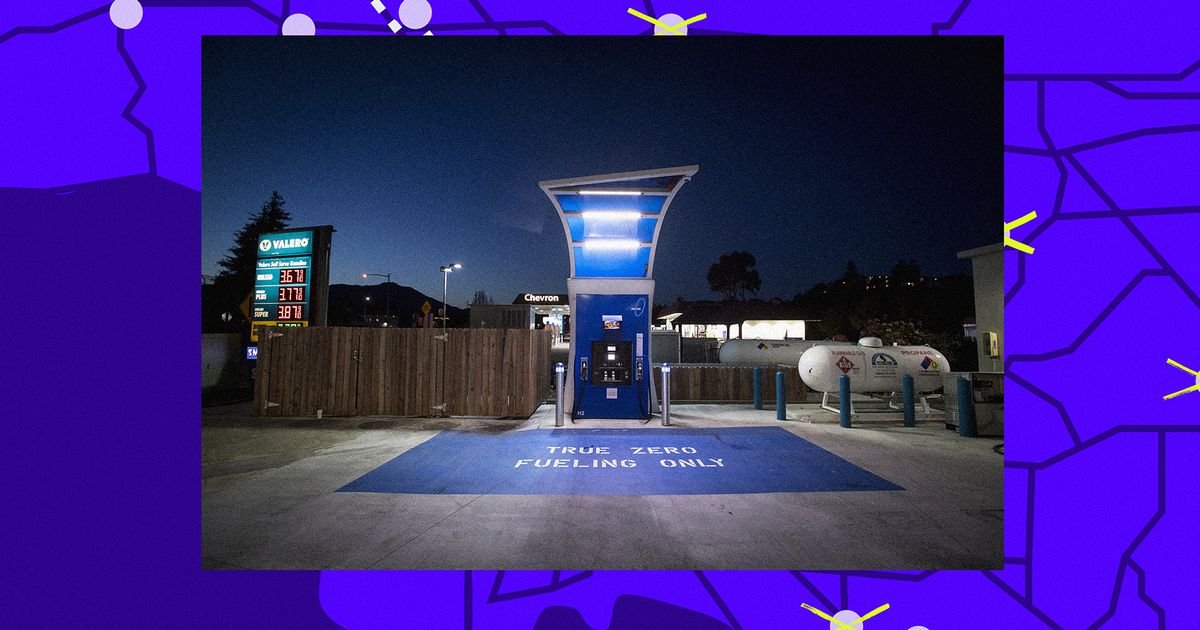

In 2004, California Governor Arnold Schwarzenegger announced plans for a “hydrogen highway.” It called for a new kind of fuel station, built to support a new kind of electric vehicle. Cars powered by hydrogen fuel cells could help clean up the air and free the US from foreign oil — and California could lead the way.
That’s not what happened. Twenty years later, the American auto industry is shifting overwhelmingly to electric vehicles… but they run on batteries, not hydrogen. The hydrogen highway is littered with shortages, high prices, and faulty equipment. Thousands of drivers across the state are left wondering whether they bet on the wrong future.
We wanted to find out what happened to California’s hydrogen dream.
So, we hit the road.
Our mission: a roughly 450-mile trip across California in a Toyota Mirai, the most popular hydrogen-powered car on the market today. We planned to drive around the Bay Area, down through Central California, and into Los Angeles, visiting as many stations and meeting as many drivers as possible along the way.
Bay Area
Milpitas
We rented a Mirai on Turo — it was one of only two available hydrogen-powered cars on the platform in the Bay Area. The car’s owner, Salman, told us he was concerned about our itinerary.
Cupertino
Manideep and Rupesh were the first fuel cell drivers we met. They’ve been driving their Mirai for about four months, and while they love the car, the fuel situation is wearing on them. They also had some advice for our road trip.
Sunnyvale
All the hydrogen pumps we saw were co-located at traditional gas stations; the hydrogen distributor leases the space from station owners. At some stations, hydrogen pumps were sandwiched between gas pumps.
Palo Alto
One pump we visited in Palo Alto has been offline for two years. The pump’s operator, FirstElement Fuel, told us that it took the pump over from a different hydrogen supplier but that systems issues have prevented it from bringing the station online.
South San Francisco
Earlier this year, Shell closed nearly all of its hydrogen stations across the state; there are no longer any active stations in the city of San Francisco. It’s put additional strain on the remaining Bay Area stations.
Oakland
Another Mirai driver we met, Rebecca, was committed to her car and more optimistic about the future of hydrogen.
San Jose
We needed to top off the tank before leaving the Bay Area. The final station we visited was online — but actually getting fuel was another story.
Along the I-5 corridor between San Francisco and Los Angeles, there are hundreds of battery EV charging plugs — and one hydrogen pump. It’s at a place called Harris Ranch, a rest stop deep in California’s Central Valley. Since our Mirai wasn’t likely to make it all the way to SoCal on one tank, we stopped at Harris Ranch to refuel and see whether other hydrogen road trippers showed up.
Harris Ranch
Harris Ranch Resort
The Harris Ranch Resort is massive. In addition to a Shell gas station, Tesla Superchargers, and a hydrogen pump, it also boasts a Spanish hacienda-style hotel, multiple restaurants, and a gift shop with its own butcher counter.
Tesla Supercharger
The Harris Ranch Supercharger station is reportedly the largest bank of chargers ever built by Tesla. While waiting for hydrogen cars to show up, we wandered over and asked Tesla drivers about life with their battery-electric cars.
James Sweet Bonsai
James Kim has been selling bonsai trees for 23 years. His van is parked just across the street from the exit to Harris Ranch, and he says he gets customers from all over. His largest trees are more than 30 years old.
Hydrogen Fuel Station
After four hours of waiting, another Mirai finally showed up. Billy Chen has made the trip between LA and San Francisco several times — he’s the only driver we found who has.
Since September of 2023, 13 hydrogen stations in the Los Angeles area have been largely offline due to problems with a regional fuel supplier. The shortage has been a major headache for fuel cell drivers in LA — and there are more here than anywhere else in the state.
Los Angeles
San Fernando
The first station we reached in Southern California had four fuel pumps and was unaffected by the hydrogen shortage. Unsurprisingly, it was the busiest station we visited.
Sherman Oaks
There’s a concentration of hydrogen-powered cars here in LA, but the ecosystem is still exceptionally niche. In the first half of 2024, about 322 fuel cell cars were sold in California. At many stations, Mirai sightings were rare.
Burbank
We heard a similar story from lots of drivers: they were considering a battery-electric car but were talked into a Mirai. Many regretted the choice.
Studio City
Like in the Bay Area, there are very few stations in Southern California outside of Greater Los Angeles. So, road trips farther afield are risky.
Hollywood
As of publication, there is no estimate for when the hydrogen supply shortage in Southern California will be resolved, leaving stations like this one offline indefinitely. The shortage will hit the one-year mark in September.
Even if California’s hydrogen highway falls apart, fuel cell technology may still find its niche in a decarbonizing world. The Verge’s Andrew Hawkins dove into the world of hydrogen-powered trucks, boats, planes, and a lot more.
Science
Anova will start charging a subscription fee for its sous vide companion app

Starting on August 21st, 2024, Anova will be introducing a subscription fee for new users of its sous vide cookers who want to take advantage of additional features available through its mobile companion app, including controlling the appliance remotely.
Similar to the Snoo, a smart bassinet that recently locked previously free features behind a monthly subscription, Anova’s fees — $1.99 per month or $9.99 per year — will only apply to new users who create an account in the app starting on August 21st.
As explained in a blog post shared on the company’s website last week, existing users, and those who purchase an Anova cooker before August 21st, can still use all of the app’s features for free, but everyone will be required to create an account to do so. Previously, account creation was optional.
All three sous vide cookers currently offered by Anova can be used on their own without the app. The additional functionality the subscription adds “will vary from product to product,” according to the company, but mostly focus on convenience including the ability to start a sous vide cook and adjust the temperature remotely, cooking status updates, and access to recipes, including bookmarking and sharing them with others.
Anova CEO, Stephen Svajian, explained that the subscription was a result of a growing user base. “As our community has grown, so have the demands on our resources. Our community has literally cooked 100s of millions of times with our app. Unfortunately, each connected cook costs us money.” The new fees will be used to “maintain and enhance the app.”
Although many users have shared their displeasure with the decision in the blog post’s comments, Anova is letting consumers choose if they want to pay more for the company’s products, instead of just increasing the price of its hardware, as Digital Trends points out.
-

 Startup Stories11 months ago
Startup Stories11 months agoWhy Millennials, GenZs Are Riding The Investment Tech Wave In India
-
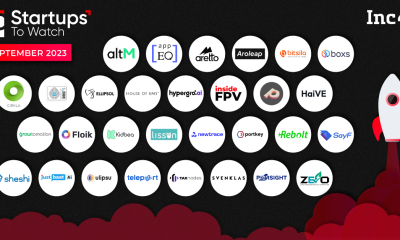
 Startup Stories11 months ago
Startup Stories11 months agoStartups That Caught Our Eyes In September 2023
-
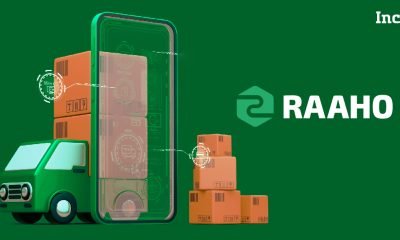
 Startup Stories11 months ago
Startup Stories11 months agoHow Raaho Is Using Tech To Transform India’s Fragmented Commercial Trucking
-

 Startup Stories10 months ago
Startup Stories10 months agoMeet The 10 Indian Startup Gems In The Indian Jewellery Industry’s Crown
-

 Crptocurrency6 months ago
Crptocurrency6 months agoLither is Making Crypto Safe, Fun, and Profitable for Everyone!
-
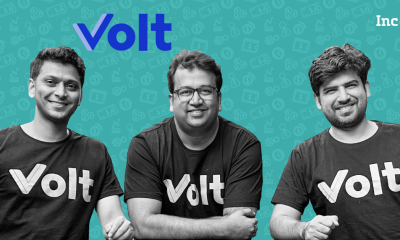
 Startup Stories11 months ago
Startup Stories11 months agoHow Volt Money Is Unlocking The Value Of Mutual Funds With Secured Lending
-

 E-commerce11 months ago
E-commerce11 months agoTop Online Couponing Trends To Watch Out For In 2016
-
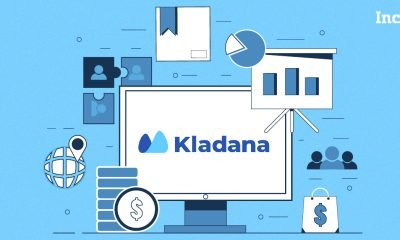
 Startup Stories11 months ago
Startup Stories11 months agoWhy Moscow-Based Kladana Considers Indian SME Sector As The Next Big Market For Cloud Computing




